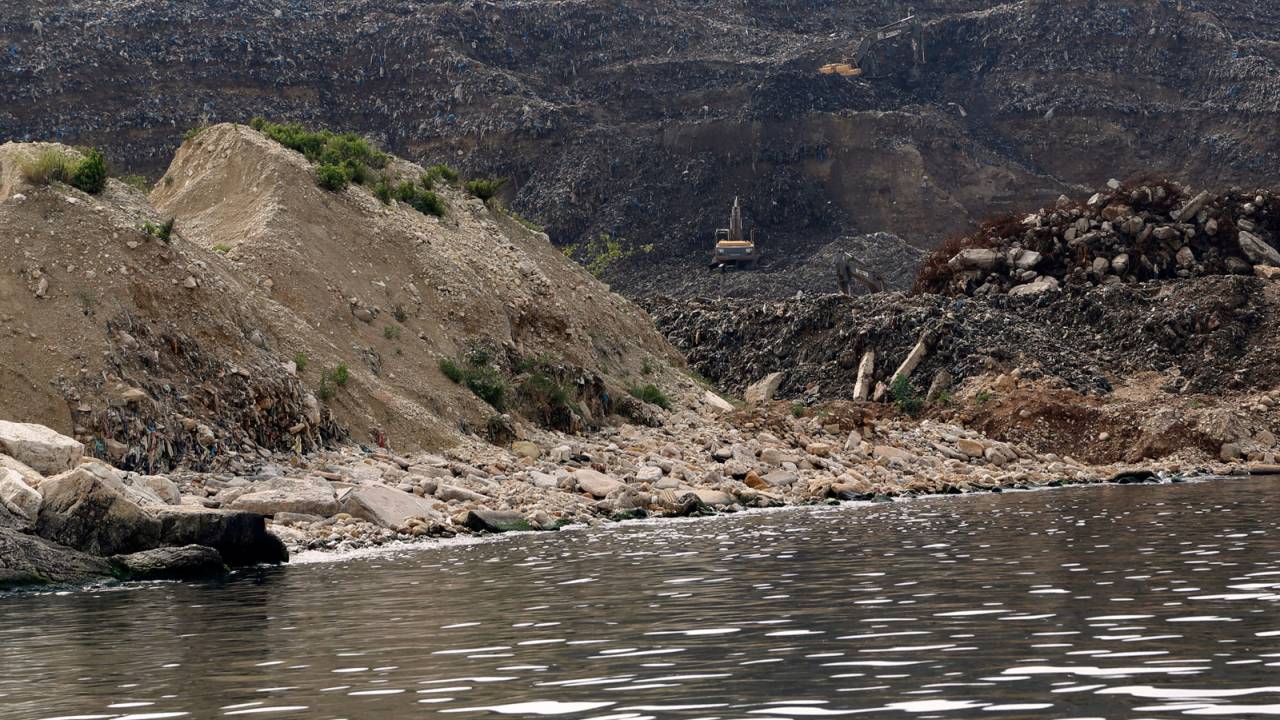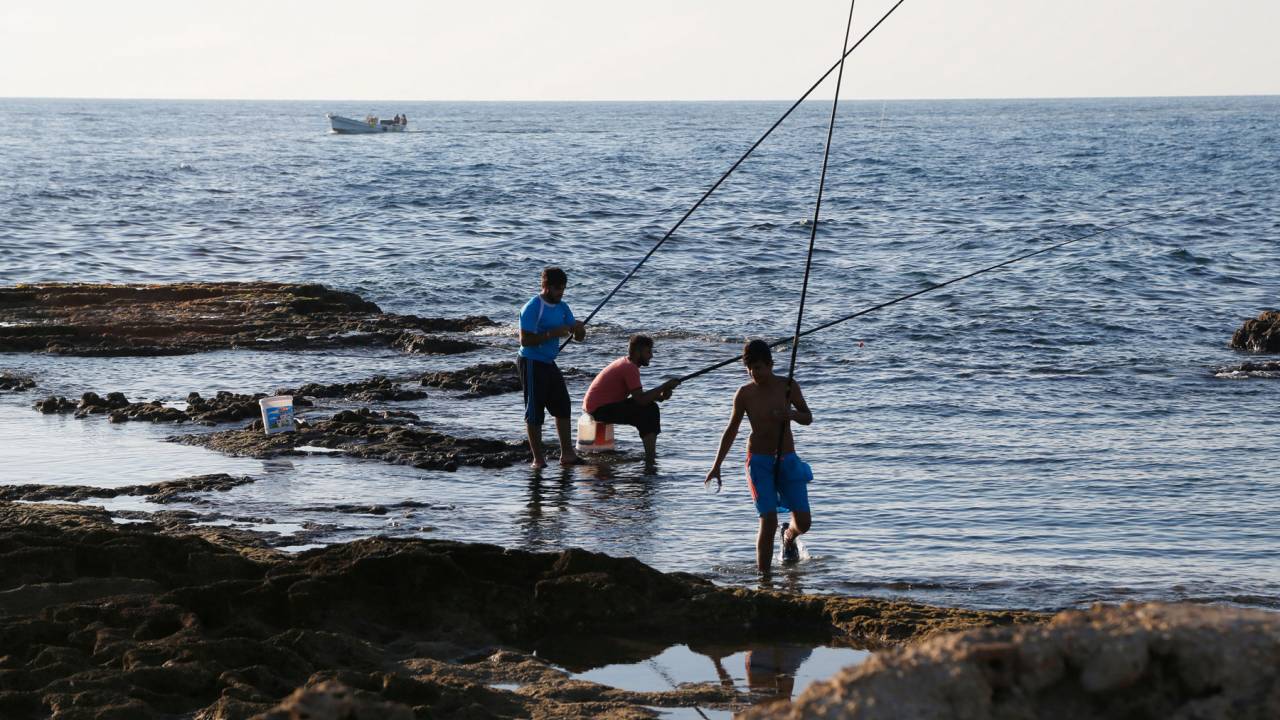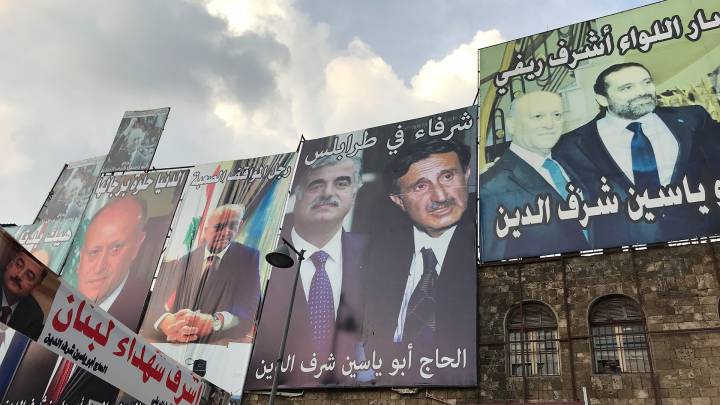Trash dumps around Beirut are leaching toxic chemicals and dumping refuse straight into the sea, killing marine life and contaminating beaches. Photographer Constanze Flamme captured the scale of the environmental disaster.
zenith: Your photographs show some disturbing sights – trash being dumped into the sea, waste and chemicals in the water and on the beaches. What could you not capture with your camera?
Constanze Flamme: A photograph is always a framing, and some factors are left outside the frame. As is sometimes experienced in vast landscapes, a photograph does not necessarily capture the awe of the moment. It was similar with some sights here – the enormous scale of plastic bottles covering the beaches and the maritime litter glittering in the sun. The smell was in parts extremely pungent, especially where there was raw sewage flowing into the sea, such as at the bay of Costa Brava, where sewage colours the water orange. I couldn't look at my images the day after I captured them, as I had a physical reaction when reminded of the smell and the immensity of the waste.
How did you feel when taking these photographs?
It simply made me sad. As usual, we have to go back in history and question where these behaviours are rooted. The lack of organisation during the turmoil of the civil war caused the actual situation. But to address the problems, there is a need to activate communal awareness and engagement with the environmental aspects, not to mention the problems with corruption in Lebanon, continuous mismanagement, and prioritising the interests of privatisation.
In your photographs, we see people swimming, sunbathing and fishing beside waste floating in the sea. What are the reactions of ordinary people? How is the garbage changing life along the shoreline?
I was surprised to see that many people just accept the fact of polluted beaches, sunbathing and swimming next to the waste – or actually in the drifting garbage carpets floating on the water. However, an increasing number of citizens are shocked and responding to the problem.
How are citizens responding?
An increasing number of activists are carrying out beach clean-ups, which engage with the local community and raise awareness. Protests are ongoing and activists are monitoring the political decisions around the two dump sites straddling Beirut. That civil society is taking action gives us some hope; meanwhile, the scale of the polluted areas is still disturbing and toxic waste is leaking into the Mediterranean, a sea shared by many countries.
Read the full zenith investigation into Beirut’s trash crisis, ‘A Sea of Waste’
Previously you photographed the aftermath of the Deepwater oil spill in Louisiana. Do you see parallels with the situation in Lebanon today?
In 2011, I walked a beach in one of the areas most affected by the Deepwater Horizon spill. I met local families and tourists allowing their children to swim in water which was contaminated not only by the crude oil but also by Corexit, a chemical to disperse the oil that was widely used in the Gulf, and which in Europe is on the list of forbidden chemicals. I also met sports fishermen from Texas catching big fish from the sea. When I asked them their opinion about health risks, one responded: “Drill baby, drill!”
This was on a beach of Grand Isle, a popular vacation area in Louisiana, which was thoroughly cleaned. But nearby you could find tar balls and fish washed ashore with exploded innards. Of course, seafood is rooted deeply in the cultural landscape of the coastal areas and a whole industry depends on it. So does tourism. The region also depends on the oil industry. This creates a conflict.
I was raised with the Green Party and environmental agendas in the political landscape of Germany in the ’80s and ’90s, which were influential and raised sensitivity and awareness of these topics. Environmental education makes a difference, and sadly this not all-encompassing in Louisiana or in Lebanon.
Constanze's photos of Beirut:
Constanze Flamme is a Berlin-based photographer, born 1981 in Husum, Germany. She has photographed in Lebanon, Egypt, Paraguay, the United States and across Europe. In 2011 she travelled to Louisiana to document the aftermath of the Deepwater Horizon oil spill. www.constanzeflamme.de




















